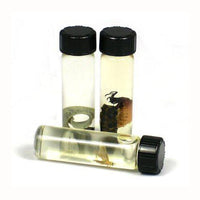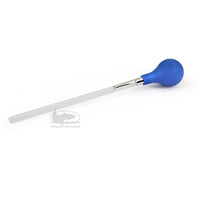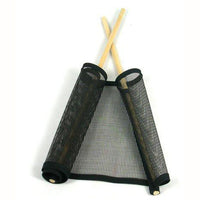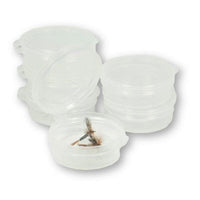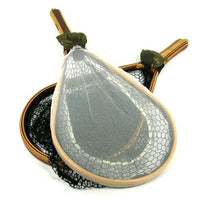
Entomology Aids
Collecting insect samples in the trout stream can accelerate an angler’s success rate faster than just about anything short of hiring a guide. Understanding the food sources and the timing of those food sources in your favorite trout stream is well worth a few minutes throughout each day on the water.
Read more
Entomology aids are used to collect insect samples in your favorite trout river or stream, and there are a few different options available. You can use the Lightning Strike Nymph Net or Quick-Seine by placing the net just downstream of your feet and kicking up a few rocks so that anything under the rocks gets washed into the nymph net downstream. Lifting a few rocks out of the water and observing the insects attached to the bottom of the rocks is also productive. When done, take the net to shore and observe the insects you have collected. This is where Glass Specimen Vials can be very useful.
Place insects you’ve collected into the glass vials to get a much better view of their size and color. Our small Hinged Lid Containers are also very useful for observing insects on the river. If you wish to preserve insect samples in our Glass Specimen Vials, simply add a solution of 70% Isopropyl Alcohol and 30% water into the vial with your insects. This will keep your specimens in good shape for years to come.
Another one of the available entomology aids for observing food items in a stream or a lake is the Stomach Pump. This handy tool is gentle on the trout if used properly. To use the stomach pump, squeeze the bulb of the pump and softly insert the tube just far enough into the throat of the trout to get suction on the bulb. Then, slowly remove the tube from the trout’s throat until the bulb releases and sucks any food in the trout’s throat into the pump. Release the trout. Suck a small amount of water into the stomach pump and then expel the water into one of the glass vials. If the trout had eaten anything recently, the pump should have captured it and it should now be floating in the glass vial for your observation.
The stomach pump is one of the favorite entomology aids of experienced chironomid anglers on lakes. Since chironomid (midge) hatches can change frequently throughout the day, keeping track of which insects the trout are feeding on can be the key to success. Taking an occasional sample with the stomach pump can be enlightening… as long as you can fool a few trout to use the pump on!

